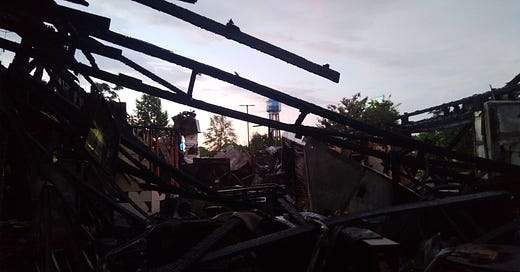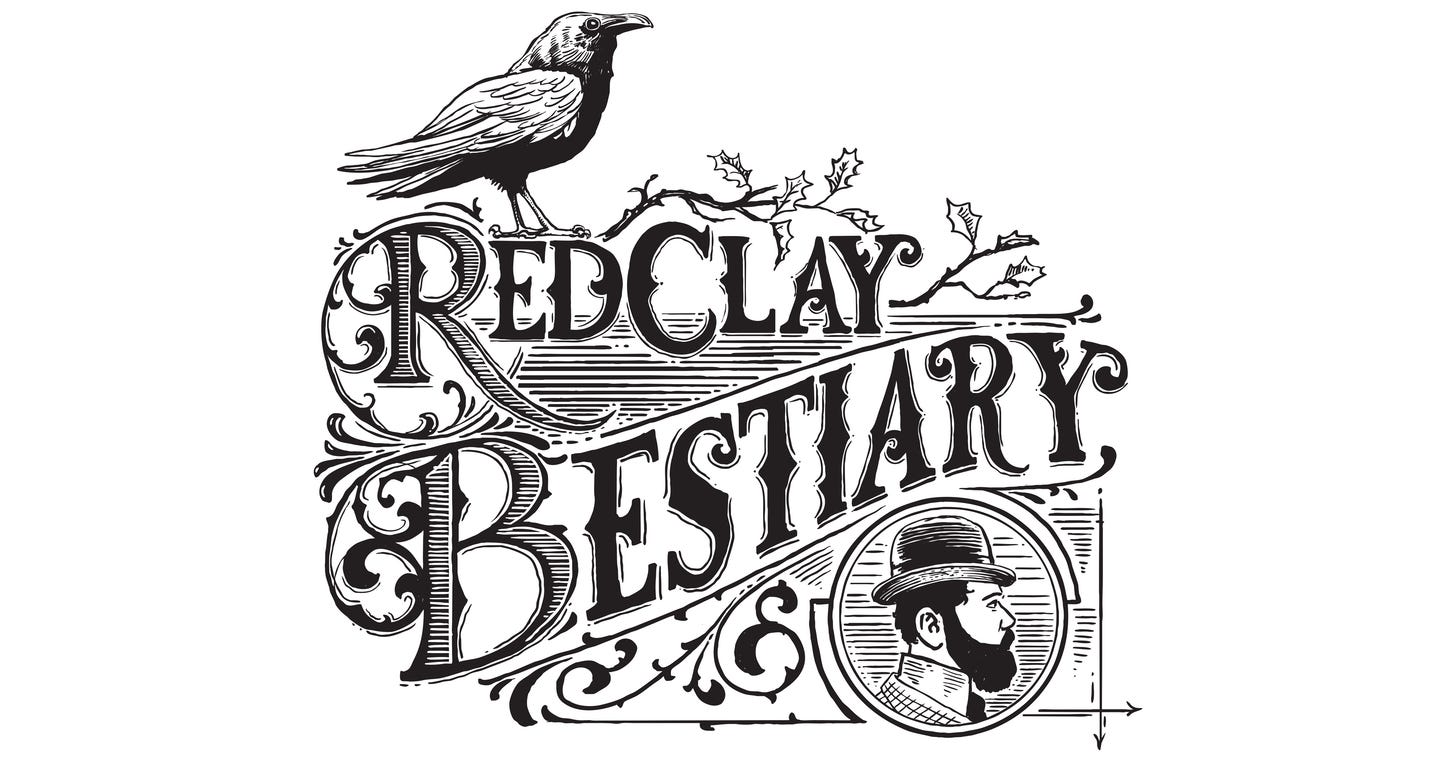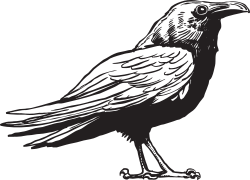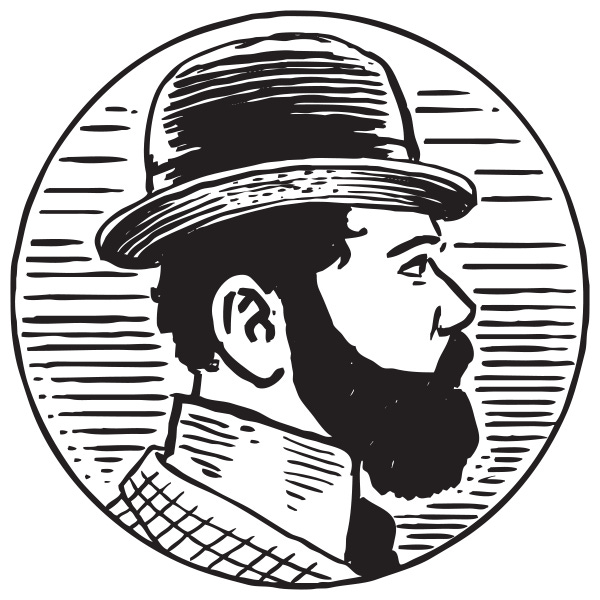For the last eight weeks or so I’ve been engaged in an experiment, seeking to answer an important question: Can I write two things at once? The answer, it turns out, is not really, at least not while I also have to work a forty-hour job shoveling pixels and hang out with my family and play music and do work around the house and eat food and go for walks and so forth, and these are all things I do and have no intention of ceasing, so this week I decided to do what deadline writers often do: turn to a formula.
I’ve tried to stay away from current events in these pages, except where I saw something universal and evergreen, on the grounds that everyone needs a break, myself included, but as we seem to be near an inflection point, or least I pray to the gods we are, it’s not going to hurt anything to take stock. Anyway, the Black Lives Matter rallies of the summer—the topic I’m going to address—are not quite current events any longer, although they are likely to come roaring back depending on what happens in the trial of Derek Chauvin currently ongoing in Minnesota.
Seeing how my pandemic lockdown has mostly been a year of thanking God I get to work next to a window for a change, I don’t have a lot to say that you haven’t experienced yourselves. I watched the NBA shut its season down. We cleaned our groceries. We watched Donald Trump flogging quack cures on TV. Same old same old. I did have one experience worthy of remark, however, and I’m going to reprint a portion of an essay I wrote on the topic in the weeks after it occurred. I hope you derive some edification or at least amusement from it.
June 30, 2020
When this most recent wave of Black Lives Matter protests began, following the death of George Floyd in Minneapolis, I caught word that the dance studio where my wife takes classes was organizing pickups and crash pads for protesters who needed either. This seemed like a good way for me to support the movement, so I offered to drive for them. I served in this capacity at two demonstrations near Centennial Olympic Park in my home city of Atlanta, but the major clashes with the police were already past and both nights were peaceful. I spent both evenings watching people dance in the street, which is a great way to spend a weekend in the Time of Covid.
Then Raychard Brooks was murdered by two police officers in the parking lot of a Wendy’s near the corner of University Avenue and Pryor Street, setting up a crazy dynamic I didn’t understand and couldn’t predict, but into which I stepped with all of the oblivious confidence that comes from having been outfitted with white skin and a six-foot, two-hundred pound1 frame. The night after Brooks’ death I was dispatched to the southeast corner of the neighborhood of Peoplestown, where the Wendy’s was located. I arrived around eight and was greeted with a loud bang and a cloud of smoke. The crowd of probably a thousand or more scattered in all directions, but it turned out to just be someone lighting fireworks. Still, it was good to start the evening by shitting my pants—it would save me some trouble later.
The intersection lies a hundred yards to the east of the Downtown Connector—a stretch of interstate shared by I-75 and I-85 running through the middle of the city like an open heart surgery scar. There are gas stations on two corners and a liquor store on a third. The other corner is dominated by the northbound freeway entrance ramp; the exit ramp snakes behind one of the gas stations. Police had formed a line across the former, and protesters were making their way from the latter up the freeway embankment and gathering along the edge of the interstate, which they would later block briefly.
I milled around in the crowd, handing out flyers advertising our support services. I could see police equipping themselves in riot gear behind the line, and two armored SWAT vehicles were parked on the ramp. Stay away from there, I thought to myself. As though in answer to my internal monologue, someone started yelling through a megaphone: “White people to the front!”
I’m as white as milk, and from what I’d read, this was a safety tactic. Violence is less likely—in theory—if there are White people between the police and Black protesters. I’m pillow tough, pretty much, but this felt like an obligation, so to the front I went.
Standing in front of a line of police decked out for war is something new in my experience. Many wore bulletproof vests. Almost all wore helmets with face shields. Most were Black. One White cop chatted amiably with the demonstrators in front him. The rest remained utterly aloof, avoiding our eyes and pretending they couldn’t hear all the remarks directed at them. More than one Black protestor harangued them as traitors to their skin, but they all maintained the sort of expression you wear when you’re waiting in line at the DMV. At one point I coughed and the cop in front of me took a step back. I told him it wasn’t Covid but marijuana, which I thought was hilarious, but his constipated air didn’t even flicker.
It was past nine and growing dark when the crowd began to migrate toward the Wendy’s, past the intersection, the Chevron on the corner, and the BP just past that. The amount of infrastructure devoted to people who are merely passing through this area is pretty amazing, especially considering the nearest grocery store—a Piggly Wiggly that time forgot—is three and a half miles away.
I was standing in the BP parking lot when the Wendy’s began to burn. I could hear glass breaking, but the crowd around the place was huge and it was difficult to see what was going on. Smoke began to emerge from the squat, ugly building. As I watched, two fire trucks, two police cars, and a police truck came hurtling down Pryor and turned toward the smoldering restaurant. It seemed like overkill, as the fire was barely noticeable at this point, but it was moot in any event, as the crowd was having none of it. People thronged the street, hurling water bottles at all the vehicles.
After a ten-minute standoff, they backed out, turned around in the intersection, and sped off the way they came. No further attempts at rescue were forthcoming, and the Wendy’s was left to flame-broil not just burgers but tables, cash registers, refrigerators, and toilets.
I had other commitments that night and so I left not long after this. But I returned on Sunday. I arrived around seven-thirty to an ominous scene. A great storm rose up as I walked from my parking spot down Pryor Avenue. I was perhaps fifty yards from the Chevron when the rain came, blowing sideways against my back. The sky was the color of peanut butter and the trees whipped around like those inflatable air dancers at car dealerships. I ran to the shelter of the station’s canopy. I was soaked on one half and perfectly dry on the other, which was a far better state of affairs than that enjoyed by the three or four hundred protesters who came streaming down the freeway embankment like gravy over biscuits. They crowded under the canopy and packed into the store. People jumped on cars, drivers blasted their horns, there was music coming from about six different places. A block party had broken out.
The storm passed as quickly as it arrived, leaving a rainbow behind. It seemed like a good omen, and for an hour or so peace reigned. People began to filter into the Wendy’s parking lot, and I followed. I peered through the broken windows at the charred beams piled in the dining room, silhouetted like the legs of some great dead insect against the last of the daylight visible through the open roof. An impromptu memorial had appeared against the front wall of the building—heaps of flowers, protest signs, and a large photograph of Rayshard Brooks, all soaked and wretched from the rain.
As the crowd in the parking lot grew, a series of people gave extemporaneous speeches in front of the derelict burger mill. One, a tall Black man in a baseball cap, introduced himself as Antonio and spoke eloquently about the death of his brother, who had been shot by police a year earlier. When he was finished I approached him and gave him a sheaf of flyers—he hadn’t been elected per se, but it was clear he was the moral leader of the demonstration that night.
When everyone who wished to speak had done so, Antonio returned and announced that we would be marching to the Zone 3 police headquarters. My neighborhood. If the night was dreamlike from the beginning it was about to turn into an acid trip.
The Zone 3 headquarters tells a specific architectural story to those of us who live nearby: that police are more Andy Griffith than Dirty Harry. It’s a modest and cozy-looking yellow house situated at the southwest corner of Grant Park, a 131-acre greenspace in the heart of the city that is home to the Atlanta Zoo and gives the neighborhood its name. (Full disclosure: I actually live in Ormewood Park, which borders the east edge of the park and suffers slightly in comparison to its older and more wealthy neighbor; the distinction would probably be lost on a visitor.) From the outside, the headquarters building is friendly and approachable. It matches the aesthetic of its surroundings—meticulously restored 1920s and 1930s bungalows nestled between towering oaks and elms, sultry magnolias, and bushy maples—and seems to speak of community as firmly as Jimmy and Bridgette Galloway’s pet store kitty-cornered across the intersection.
But like so many things Southern, Grant Park is not always what it purports to be. The park itself was donated to the city by Lemuel P. Grant, an engineer best remembered for designing the fortifications used by the Confederate Army in its defense of Atlanta against the Federal armies of William Tecumseh Sherman in July and August of 1864. Grant Park benefited from its proximity to Fulton County Stadium and later Turner Field, without having suffered the disruptions incurred by those projects—to say nothing of the Downtown Connector—to the neighborhoods to its west: Summer Hill, Mechanicsville, and you guessed it, Peoplestown. These areas, once the most diverse in Atlanta, saw their street grids decimated by the interstate boom of the 1950s and the vast deserts of parking needed to entice suburbanites to driving into downtown Atlanta to watch Hank Aaron hit dingers.
Grant Park residents, if I may generalize, lean affluent and liberal, but the affluence allows that liberalism only so much latitude. When risks are entailed, I have seen principles affirmed by yard signs evaporate, not among all my neighbors, but enough to disappoint. So too the police headquarters. Its homey exterior notwithstanding, I once had occasion to go inside and found a threadbare office filled with surly desk cops who were loath to even acknowledge me.
Ok, maybe it was a bad day. I’m an optimist and tend to give the benefit of a doubt even to those who don't give cause for it. You can easily take advantage of me if you just put on a friendly face. And that was my worldview, vis-a-vis Grant Park and it’s police precinct house, even as the demonstration marched off to the east to disabuse me of these notions.
My car was parked in the opposite direction from the one the marchers were headed in, so I drove to Grant Park instead, parking on Cherokee Avenue, at the western edge of the park, a block north of the police perimeter, which I subsequently walked right through. The cops paid no attention to a lone White guy walking alongside the park. I was invisible.
The main concentration of police was two blocks south, at the intersection of Cherokee and Atlanta Avenue, just past the precinct building. There were several hundred visible in riot gear, along with several police trucks, a prisoner bus, and and what looked to me very much like an armored personnel carrier. I slipped down Ormond Avenue, then turned at the next side street, popping out on Atlanta Avenue just as the head of the crowd of demonstrators began to pass. Antonio was at the front.
At this point events began to pile up very quickly, and I began to lose control of my autonomy as the crowd made choices beyond my influence or even my ken. I’d read about this before—Aldous Huxley wrote about “herd poisoning” in The Devils of Loudon, “The fact of being one of a multitude delivers a man from his consciousness of being an insulated self and carries him down into a less than personal realm, where there are no responsibilities, no right or wrong, no need for thought or judgement or discrimination—only a strong vague sense of togetherness, only a shared excitement, a collective alienation.”
I read this as a twenty-something and believed every word as though it were holy scripture. Today I’m less sure. To begin, it is undeniable that this crowd was driven by what I would consider to be an axiomatically ethical and moral premise—to seize their humanity from forces that would deprive them of it. Moreover, Huxley wrote mainly of mobs activated and controlled by state and church, seeking to shore up their power.
He is correct, however, insofar as crowds deprive individuals of agency and temper the ability to think or judge or discriminate. It’s not necessarily a debasement of the individual as it is a subjugation of the individual to the will of the crowd, which is frighteningly tangible. What I felt that Sunday night was a collective mood that wavered between two poles—the same poles famously (and, it must be said, somewhat artificially) articulated by Martin Luther King and Malcom X. Would we choose peace or war? I could feel the debate rippling through the crowd, but it was uncontrollable—well, uncontrollable by me at any rate.
I stood by a fence twenty feet from the front. I was aware of my charge: I was a driver. I needed to be able to get back to my car. But this abstract fact held no power when the call came again: “Allies to the front.” Question my actions if you wish but there’s a huge difference between reading about it and living it. If John Lewis could go to the front and be clubbed almost to death for the exact same cause, what rationale could I possibly muster to refuse? My obligation in that moment felt like iron bonds.
I found myself standing at the junction between two riot shields—one big and rectangular, one small and round like a buckler. A tall Black policeman stood behind the former, and a fat White cop behind the latter. All the cops in the line wore body armor head to toe, with helmets and gas masks. They were equipped for battle, and at least in my part of the line they were facing an unarmed 50-year old man with arthritic hips, arms locked on either side with two girls, neither of whom could have been older than 21 or taller than 5’2”. Angry Black men leaned between us, shouting and swearing at the cops, teasing them for cowardice. Occasionally someone’s anger would boil over; they would break through the line and would have to be restrained for fear of triggering the riot that felt all too incipient.
I have no idea how much time passed. Someone came down the line instructing us how to clasp our hands in front of us without meshing our fingers in order to avoid fracturing them I presume. At some point I became preoccupied with getting earplugs in my ears, as I suspected the APC was armed with a sound cannon. Behind the police line there was a swirl of mysterious activity, and I caught a view of black-clad police with bundles of zip ties on their belts. I’d never been arrested, but I figured that would probably be a merciful fate.
Antonio stalked up and down between the lines with a megaphone, urging us to take a step back and remain peaceful, but the crowd had come a long way and the desire for violence was palpable. I could hear individual remarks—alarming things—but it took a special sort of authority to wield the crowd the way Antonio had to that point. To my surprise, the girl to my left had it too, and she was spoiling for a fight.
“Everyone take a step forward!” she shouted. And we did.
I expected the police to rush us at any moment. I thought about my escape plan and realized I didn’t have one. The girl shouted again, “Another step forward!”
We stepped. There was no arguing—the line acted automatically in response to her order. The next step would take us into contact with the shields. I was strangely resigned. She called again, “Another step!”
The next moment I was struggling to shove the rectangular shield out of my face. I recall shouting at the cops to stop. Suddenly the buckler turned and I felt the edge strike me in the throat. I remember thinking it hurt but not nearly as much as I expected. Part of my mind was exhilarated that not only was I not lying on the ground with a knee on my neck but my arms were free and I was in possession of all my faculties and liberally fueled with adrenaline. I was ready to go.
There was a five foot gap between our line and the cops. I don’t recall moving back. I was furious. I was shouting at the buckler cop, calling him a motherfucker and a cocksucker—nothing terribly imaginative, but it flowed from my mouth without any sort of filter. I wanted nothing more in that moment than to give that lardass stormtrooper a sharp kick in the nuts.
And then, suddenly, the crowd was melting back down the street from whence it came. This looked at first like a strategic retreat—we took the side street over to Ormond. I wasn’t aware who had ordered a flanking maneuver, but it seemed incredibly clever at the time. There were cops there too, however. There were attempts to build a new line on Ormond, but most of the people were gathered in the darkness of the sidewalks. A handful of people were in the street throwing rocks, and a number of spooky-looking White guys had shown up with umbrellas pointed copward like shields, presumably to deflect rubber bullets.
In the interval between the clash and the erstwhile flanking maneuver, I came back to myself. I mentally registered the job I’d signed up for and my tenuous position, with the cops between me and my car. I would not be waltzing through their line again, from this direction. The crowd was smaller and very different than the one that had left Wendy’s forty minutes earlier. I was no longer in a position to support a protest as I was to participate in a violent riot, and I knew I was not interested in that. I was done.
And that, friends, was that. I went home and hugged my wife and kids and tried futilely to hug my cats, well aware of the fact that in all my years I’ve lived in peace and prosperity while not far away there are people who can’t escape violence like what I’d experienced that night. It’s a sobering thought and the reason why I’ll be out there again should circumstances call for it. I will, however, be gaming out scenarios like this one in advance next time.
So how about y’all? Anything interesting happen to you during the past year? Please tell me about it in the comments. It’s been a historic time—possibly the most significant period many of us will live through, and our remembrances will reverberate likely for hundreds of years, so get ‘em down while they’re hot.
Fine, two-twenty.









Terrific writing!
Riveting!